Deans
From Hon. Charles Daniels, a working New York State Supreme Court judge, to Aviva Abramovsky, our first female dean, the School of Law has been led by some of the greatest legal minds in history.
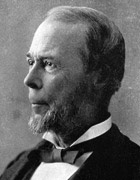
Hon. Charles Daniels, 1887-1897
Buffalo Law School chose as its inaugural dean a working judge – Hon. Charles Daniels, a justice of the New York State Supreme Court. In beard and bow tie, Daniels addressed the very first class of 15 young men, delivering a lecture titled “How to Study Law.” He was also among the faculty members who lent money – called “subscriptions” – to underwrite the school’s start-up expenses. It was during Daniels’ deanship that the school, born under the wing of Niagara University, became part of the University of Buffalo as the third school of the University, following the Schools of Medicine and Pharmacy.
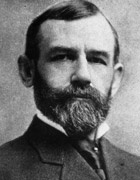
Adelbert Moot, 1897-1902
A professor of evidence, Adelbert Moot ascended to the deanship following the death of his predecessor, Hon. Charles Daniels. During his first term, the law school graduated its first two women, Helen Z.M. Rodgers and Cecil B. Wiener, in the Class of 1899. Moot became acting dean again in the 1903-04 academic year following the death of Dean Christopher G. Tiedeman. Later, along with many other faculty members, Moot contributed to a fund to establish a dedicated law library at Buffalo Law, an enterprise that within five years boasted a collection nearing 5,000 volumes.
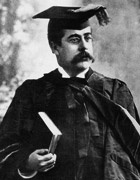
Christopher G. Tiedeman, 1902-1903
A graduate of Charleston College and Columbia Law School, and holder of a master of laws degree from New York University, Christopher G. Tiedeman was only 45 when he came to Buffalo. He had taught at the University of Missouri Law School for 10 years and at NYU for six. (There he had been close friends with Carlos C. Alden, who would become the fourth dean of the Buffalo Law School.) In Buffalo, Tiedeman taught elementary law, constitutional law, negotiable instruments and real property. His deanship was brief, however, because he died unexpectedly in 1903.
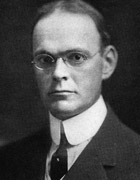
Carlos C. Alden, 1904-1936
The law school’s longest-serving dean had to confer with his doctor before accepting the job. Carlos C. Alden was only 38 when he was named dean, but his ambitious work habits as both practitioner and teacher had affected his health. With the physician’s OK, he traded those pursuits for administration. He would go on to teach at the law school for more than 50 years. During his tenure as dean, the course of study was extended from two years to three; incoming students were required to have had two years of pre-law college study; and the school purchased its first permanent home at 77 W. Eagle St., Buffalo.
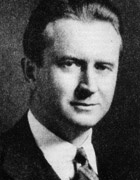
Francis M. Shea, 1936-1939
With the storm clouds of World War II looming and the Great Depression at its worst, Francis M. Shea became the law school’s fifth dean. A New Hampshire native and Harvard Law graduate, Shea practiced law in Buffalo for five years before becoming dean. Given a mandate to upgrade the quality of the school, Shea hired three Harvard Law grads; enlarged the law library by 6,300 volumes; greatly expanded the moot court program; and adopted the casebook method of teaching. As the school approached its 50th anniversary, it was admitted to the Association of American Law Schools and received American Bar Association accreditation.
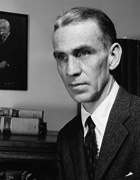
Mark DeWolfe Howe, 1940-1944
During World War II, the law school was led by a dean who once clerked for U.S. Supreme Court Justice Oliver Wendell Holmes. As dean, Mark DeWolfe Howe pushed hard to improve the passage rate for Buffalo Law graduates in the New York bar examinations. From a 25 percent passage rate in 1938, the rate rose to 44 percent by 1940. Classes were small because many potential students were in military service. Howe requested a leave of absence in 1943 to accept a commission in the Army; when he was discharged in 1945, he accepted a professorship at Harvard Law School.
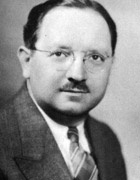
Philip Halpern, 1945-1948
Philip Halpern, a private practitioner who served as acting dean during Mark DeWolfe Howe’s wartime absence, was named to the permanent job by the University Council. Halpern, a Buffalo native, earned his bachelor of laws degree from Buffalo Law School in 1923. As dean he introduced an accelerated academic program, mindful that students were at risk of having their legal education interrupted by the military draft. And during his tenure the ranks of Buffalo Law School were swelled by returning veterans taking advantage of the Servicemen’s Readjustment Act – the “GI Bill” that made a legal education possible for hundreds of veterans in Buffalo.
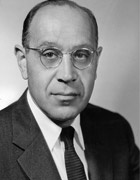
Louis L. Jaffe, 1948-1950
Once a clerk for U.S. Supreme Court Justice Louis Brandeis, Louis L. Jaffe joined the Buffalo Law School faculty in 1946. Under his leadership, the law school began to re-emphasize the use of seminars with small groups of students. It also began requiring all applicants to take the Law School Admission Test. The classes in those years were full of postwar veterans, many of them in their late 20s or early 30s, many of them married with children. They brought a wide range of experiences to the classroom and evinced great seriousness of purpose in their studies.
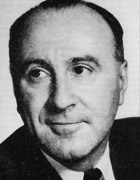
George Neff Stevens, 1951-1952
In addition to a bachelor of laws degree from Cornell Law School, George Neff Stevens brought to Buffalo Law School a master’s degree in political science from the University of Louisville – making him a forerunner of today’s interdisciplinary academician. He taught at four Midwest schools before coming to Buffalo. But he quickly came into conflict with the University Council over curriculum, faculty salaries and the state of the law library, which Stevens felt did not meet standards for accreditation. When he was offered the deanship of the University of Washington School of Law, he accepted.
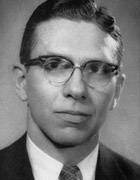
Jacob D. Hyman, 1953-1964
The law school’s 10th dean earned both the A.B. and the master of laws degree cum laude from Harvard Law. He would spend 42 years at Buffalo Law School. As dean, Hyman confronted a rapid postwar decline in enrollment; and, recognizing that many students worked full-time jobs to meet their tuition costs, he instituted a four-year program that enabled students to carry a reduced course load. He also coped with near-disaster after a building that abutted the law school’s West Eagle Street building caught fire; firefighters sprayed thousands of gallons of water on the Law School building, ruining many records and more than 1,000 law volumes.
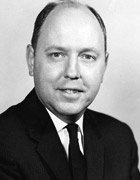
William D. Hawkland, 1964-1971
Consistent with recommendations of what would become known as the Seven-Year Plan, Dean William D. Hawkland oversaw the process that led to groundbreaking for the law school’s new home on the University of Buffalo’s North Campus. Hawkland and others insisted that the school be housed in its own building, separate from other academic units. The number and quality of applicants rose substantially during his tenure, and the first J.D. degrees were granted, to the Class of 1968. Other innovations during Hawkland’s tenure included a popular trial technique course and the establishment of a legal clinics program.
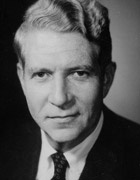
Richard D. Schwartz, 1971-1976
“Red” Schwartz, the law school’s 12th dean, was in office when John Lord O’Brian Hall was dedicated in 1974 and welcomed its first classes of law students. As the women’s movement came into full flower, women began making up a greater proportion of Buffalo Law students, as did historically underrepresented minorities. Also under Schwartz’s leadership, the law school appointed the first black lecturer, the first black assistant professor and the first tenured female professor. The school also hired its first full-time placement director, forerunner of today’s busy Career Services Office, and expanded its course offerings taught from the perspective of other academic disciplines.
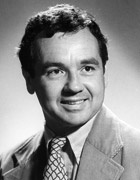
Thomas E. Headrick, 1976-1985
Under Dean Thomas E. Headrick the law school’s faculty underwent a makeover, as several long-established professors left for other opportunities. Headrick advocated for salary improvements to make Buffalo Law competitive with other institutions, and recommended measures to simplify the tenure process. At the urging of minority student groups, he also stepped up recruitment of African-American and Hispanic students, and recruited several minority members of the faculty. Headrick is still remembered fondly for his joie de vivre, which proved contagious – especially on the occasion of the school’s 90th anniversary, when the dean hosted a beer party on the second floor of O’Brian Hall.
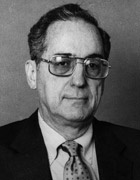
Wade J. Newhouse, 1986-1987
Wade J. Newhouse, was a member of the faculty since 1958, accepted a temporary deanship during the search for a new permanent dean. Newhouse, who had helped plan the design of O’Brian Hall, also served as director of the law library on three occasions. As dean, he reviewed the law school’s administrative structure, using computer technology to improve budget planning. He also worked to build stronger ties between the law school and its alumni – “a relationship cemented by warm memories of those years we have spent together and an understanding that we have much we can do together in improving the quality of justice.”
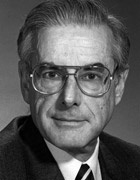
David B. Filvaroff, 1988-1992
A committed advocate of civil rights, David B. Filvaroff came to UB from the University of Texas School of Law. It was during his deanship that the Dean’s Advisory Council was created, to establish a forum for continuing communication with bench and bar. “We wanted to bring together a group of outstanding lawyers and judges who, along with our alumni association, could give us the benefit of their advice,” Filvaroff said. “It helps to bring the practitioner’s point of view very usefully and visibly to the law school.” His teaching interests included torts, international law, civil rights, federal courts, constitutional law and international human rights.
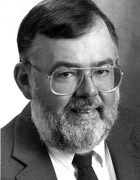
Barry B. Boyer, 1992-1998
A law school professor from 1973 to 2009, Barry B. Boyer served for seven years as dean and also directed the Baldy Center for Law & Social Policy for 15 years. He also oversaw the Environmental Law Externship in the law school’s Environmental Law concentration. Now a professor emeritus, Boyer is a specialist in environmental law. He co-directs the State of the Region project sponsored by the UB Institute for Local Governance and Regional Growth. Boyer is also active in several community and environmental groups, and is a founder and member of environmental advocacy group Friends of the Buffalo Niagara Rivers.
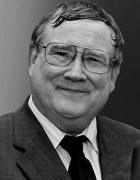
R. Nils Olsen Jr., 1998-2007
An Emeritus faculty at the School of Law, R. Nils Olsen Jr. oversaw implementation of the law school’s curriculum, which was designed to help bridge the gap that has existed historically between law school and practice. He also has served as director of legal clinical education, maintaining administrative responsibility for the in-house clinical program comprising clinical instructors who provide closely supervised, legal experience in diverse areas of practice to about 100 students each year. Olsen joined the UB law faculty as an associate professor in 1978 after serving as a lecturer of law and clinical fellow at the University of Chicago School of Law.
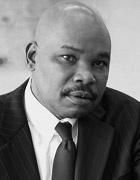
Makau W. Mutua, 2008-2014
Educated at the University of Nairobi, the University of Dar-es-Salaam and Harvard Law School, Dean Makau W. Mutua has brought a global focus to the School of Law, drawing on the numerous human rights, diplomatic and rule of law missions he had conducted in countries in Africa, Latin America and Europe. During his deanship he has placed special emphasis on building ties to law school alumni.
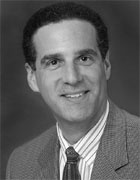
James A. Gardner, Interim Dean, 2015-2017
On December, 2014, Professor James A. Gardner was named interim dean by Provost Charles F. Zukoski. A member of the law faculty since 2001, Gardner is a highly regarded specialist in constitutional and election law. Both a Bridget and Thomas Black Professor and a SUNY Distinguished Professor, Gardner is a prolific scholar who has published six books, as well as numerous book chapters, articles and review essays. He has served as the director of the law school’s Jaeckle Center for Law, Democracy, and Governance and formerly served as the school’s vice dean for academic affairs, 2005-2012.
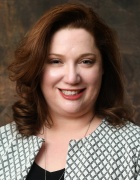
Aviva Abramovsky, 2017 - 2023
Aviva Abramovsky served as the law school's 19th permanent dean and the first woman to hold the position. She is an expert in insurance law, commercial law, regulation of financial entities and legal ethics, and she has written numerous articles and legal treatises, including authoring McKinney’s Uniform Commercial Code forms for New York. She is the current editor of LSN Insurance Law, Legislation, & Policy, and she served as the editor and academic advisor for the Connecticut Insurance Law Journal from 2010 to 2011. She also contributed to the British Insurance Law Association’s (BILA) 2013 Book Prize winner, Research Handbook on International Insurance and Regulation, and her scholarship has been recognized as a “litigation essential” by LexisNexis.
S. Todd Brown, 2023 - Present

S. Todd Brown joined the UB School of Law faculty in 2009 and served as vice dean for academic affairs from 2016 to 2023, overseeing the law school’s curriculum and leading the advancement of its academic programs. In July of 2023, he was appointed Interim Dean. A highly regarded expert on bankruptcy trusts, chapter 11, complex litigation, and mass torts, he is frequently quoted by national and international media outlets and his scholarship has been cited in a variety of state and federal opinions. Before entering academia, he was the managing partner of a small business and he practiced with the law firms WilmerHale in Washington, D.C. and Jones Day in D.C. and Cleveland.